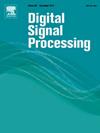BE-SGGAN: Content-aware bit-depth enhancement by semantic guided GAN
IF 2.9
3区 工程技术
Q2 ENGINEERING, ELECTRICAL & ELECTRONIC
引用次数: 0
Abstract
Bit-depth enhancement (BDE) is a potential and important way to improve the visual quality of low bit-depth (LBD) images when displayed on high bit-depth (HBD) monitors. With the rapid development of display technology, the demand for high-performance BDE algorithms is increasing. Although recent deep learning methods can reconstruct HBD images of better perceptual quality, they generally fail to recover realistic textures faithful to semantic classes and suffer from false contour artifacts in flat area, since they treat pixels in an indiscriminate way regardless of the semantic information. In this paper, we propose a novel content-aware semantic guided method to reconstruct photo-realistic HBD images by using Generative Adversarial Network (GAN). In particular, the framework of our model consists of a semantic guided generator as well as a semantic conditional discriminator. The semantic guided residual blocks (SGRBs) in our generator can perform pixel-level feature modulation conditioned on semantic segmentation map of the input LBD image to restore more realistic HBD image. The discriminator cascades the image and semantic segmentation map as input, and has an auxiliary semantic classification branch that determines whether the generated textures are consistent with the semantic categorical priors for superior discrimination performance. Besides, we take advantage of the semantic structural prior and introduce a novel gradient loss differentiating the flat areas against texture areas to further suppress the false contours in flat areas. Experiments show that our method has the ability of reconstructing natural and realistic HBD images.
求助全文
约1分钟内获得全文
求助全文
来源期刊

Digital Signal Processing
工程技术-工程:电子与电气
CiteScore
5.30
自引率
17.20%
发文量
435
审稿时长
66 days
期刊介绍:
Digital Signal Processing: A Review Journal is one of the oldest and most established journals in the field of signal processing yet it aims to be the most innovative. The Journal invites top quality research articles at the frontiers of research in all aspects of signal processing. Our objective is to provide a platform for the publication of ground-breaking research in signal processing with both academic and industrial appeal.
The journal has a special emphasis on statistical signal processing methodology such as Bayesian signal processing, and encourages articles on emerging applications of signal processing such as:
• big data• machine learning• internet of things• information security• systems biology and computational biology,• financial time series analysis,• autonomous vehicles,• quantum computing,• neuromorphic engineering,• human-computer interaction and intelligent user interfaces,• environmental signal processing,• geophysical signal processing including seismic signal processing,• chemioinformatics and bioinformatics,• audio, visual and performance arts,• disaster management and prevention,• renewable energy,
 求助内容:
求助内容: 应助结果提醒方式:
应助结果提醒方式:


